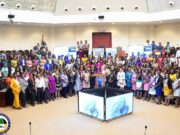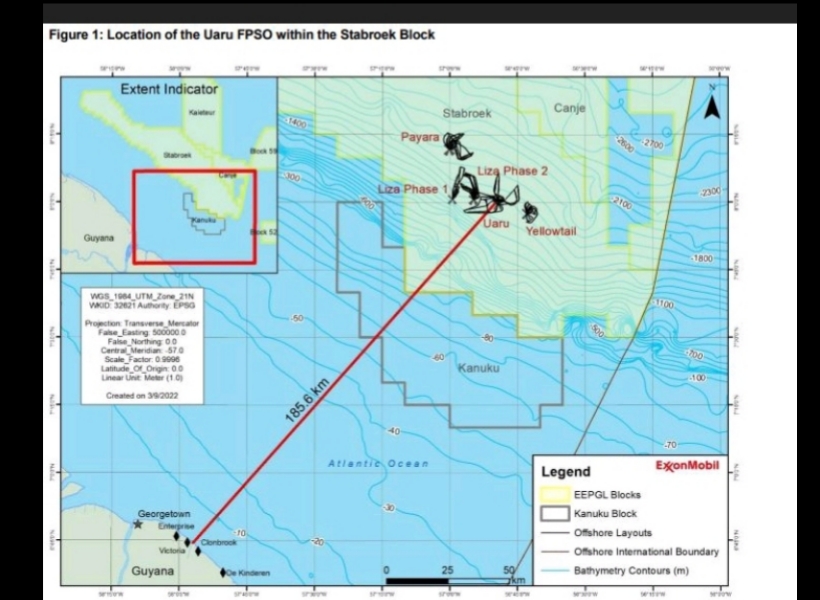ExxonMobil’s affiliate, Esso Exploration and Production Guyana Limited (EEPGL) has submitted an application to the Environmental Protection Agency (EPA) for the approval of its fifth deepwater project.
EEPGL noted that the Uaru project will: last for at least 20 years, be able to produce as much as 275,000 barrels of oil, and can come on board as early as the fourth quarter of 2026.
EEPGL further indicated that the project will be located in the eastern portion of the Stabroek Block, approximately 200 km from Georgetown and amid previous Stabroek Projects. Current plans include drilling via drillships to produce oil from approximately 40-76 wells. Production is expected to begin between the fourth quarter of 2026 and the second quarter of 2027.
The production facilities to be installed include subsea equipment attached to the seafloor as well as processing equipment on the ocean’s surface known as a Floating, Production, Storage, and Offloading (FPSO) vessel.
The anticipated production rate for the FPSO ranges between 220,000 barrels and 275,000 barrels of oil per day. The vessel will be capable of storing approximately two million barrels of oil. Third party oil tankers will be scheduled to offload the oil from the FPSO, making the oil available for export to the international market. The FPSO will also process, dehydrate, compress, and reinject associated gas produced from the reservoir.
As the Uaru and Mako reservoir pressures deplete over time, EEPGL said this gas reinjection will help maintain reservoir pressure and allow for optimum production of hydrocarbons to continue over time. In addition, some of the gas will be used as fuel on the FPSO.
EEPGL was keen to note that the Uaru development will be designed for no routine flaring of associated gas by instead planning to use the gas for fuel, or reinject it into reservoirs to improve oil recovery. This design is consistent with ExxonMobil’s plans to align with the World Bank’s initiative to eliminate routine flaring by 2030.
The subsidiary also told the EPA that it has undertaken additional studies to obtain an even more comprehensive understanding of the potential impacts of effluent discharges on water, the feasibility of alternative handling of produced water, cradle to grave waste management in Guyana, emergency response capabilities, and environmental compliance monitoring and verification. It said the learnings from current operations and environmental studies will enhance the design and implementation of the Uaru Project, thereby increasing environmental performance and economic value.
At peak, EEPGL will utilize approximately 1,200 personnel offshore during the stage where the wells are being drilled and the offshore oil production facilities are being installed. This number will decrease to less than 200 personnel during the production phase.









